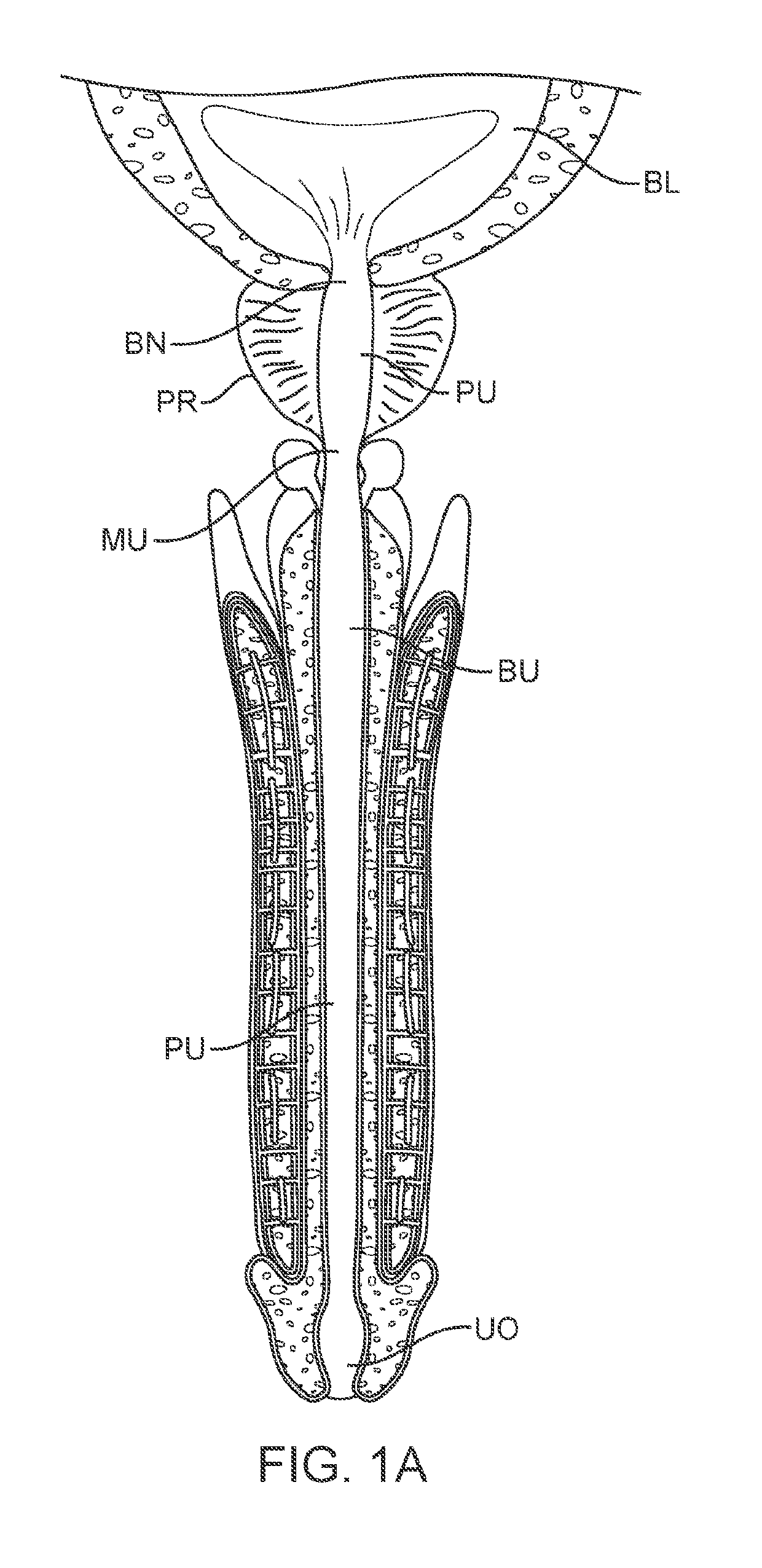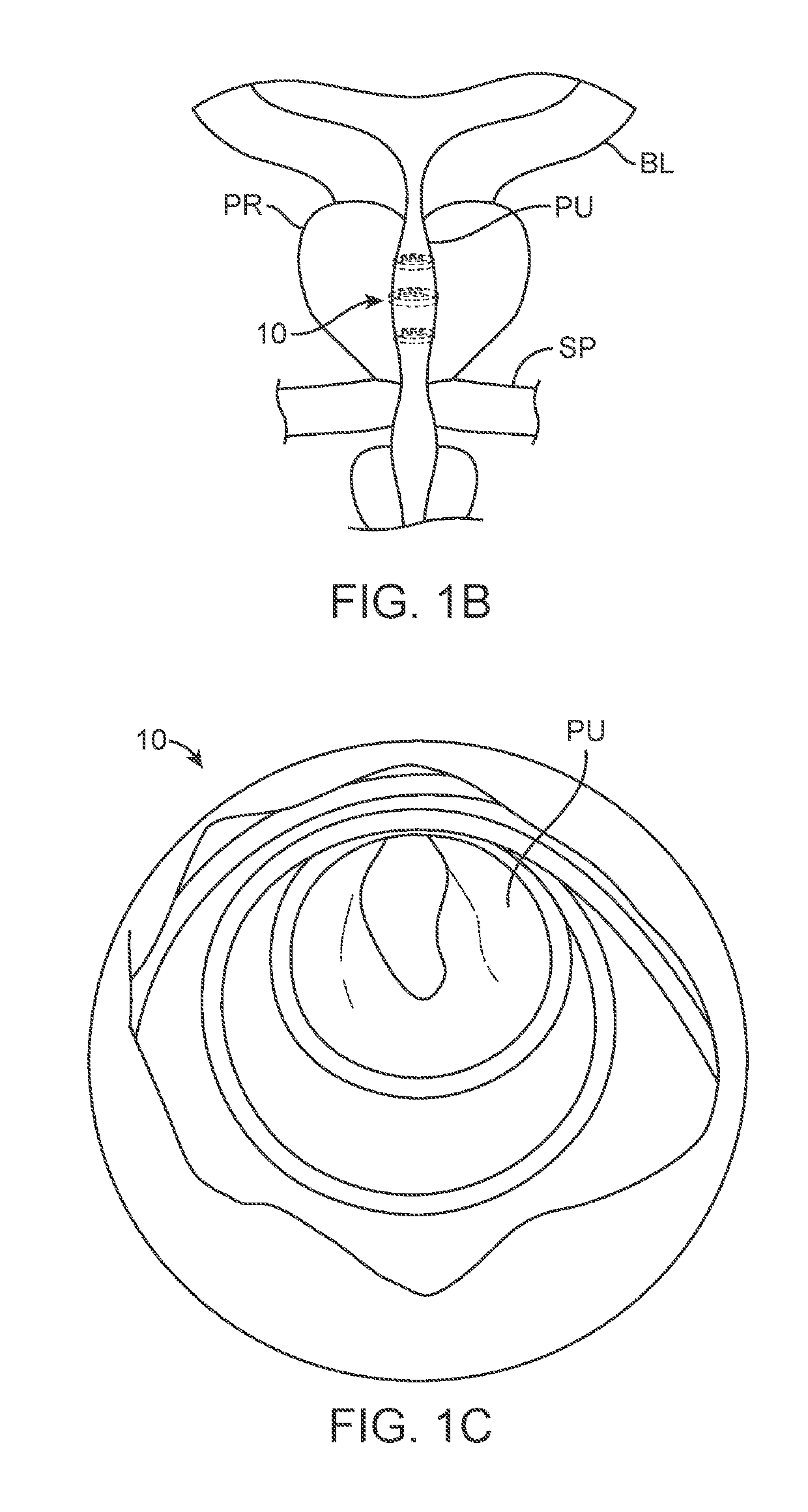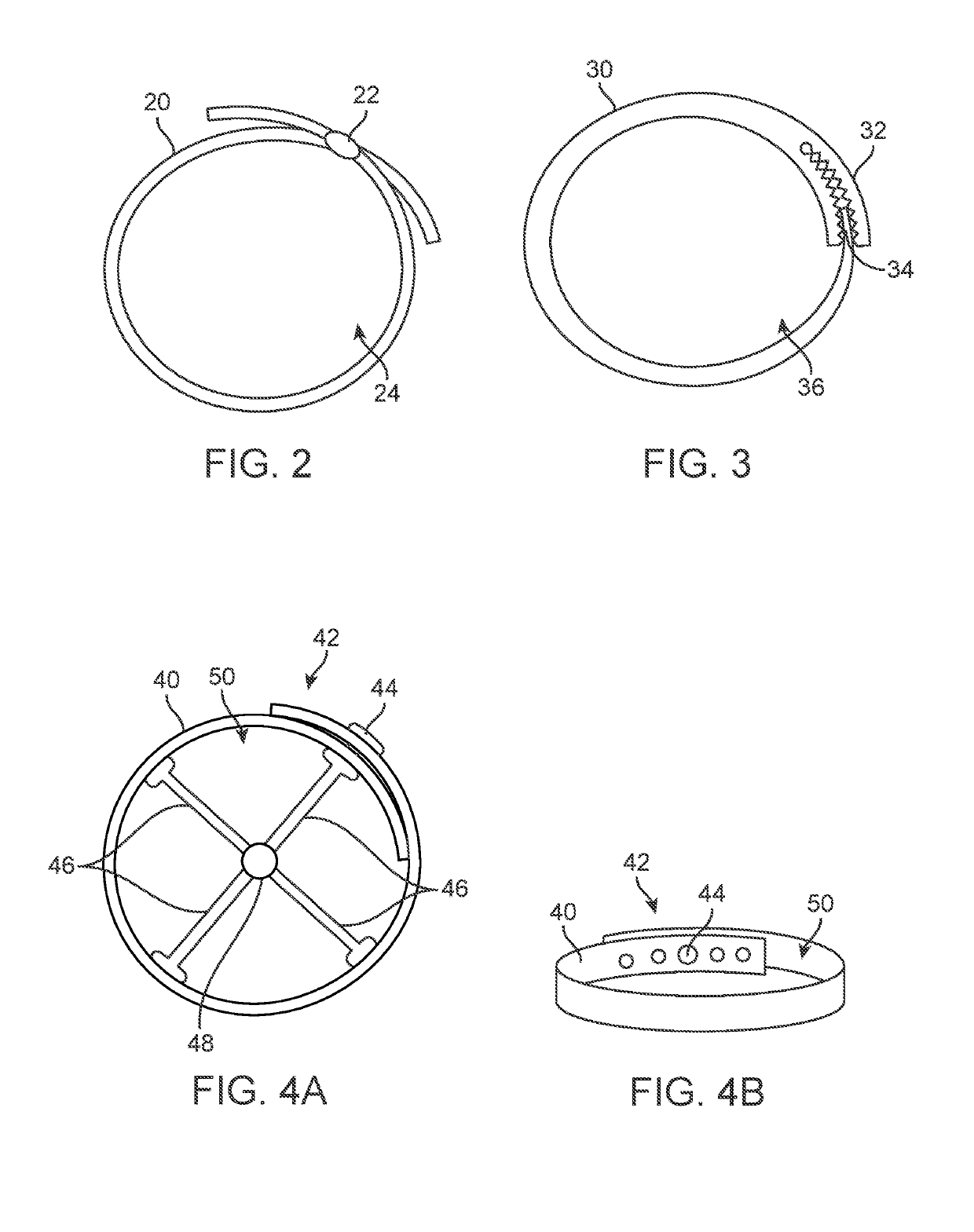Indwelling body lumen expander
a technology of indwelling body and expander, which is applied in the direction of urethrae, tubular organ implants, stents, etc., can solve the problems of distressing patients' urinary retention, more serious consequences, kidney failure or sepsis, etc., and achieve the effect of facilitating an open passageway
- Summary
- Abstract
- Description
- Claims
- Application Information
AI Technical Summary
Benefits of technology
Problems solved by technology
Method used
Image
Examples
Embodiment Construction
[0054]The deployment of one or more expandable structures or scaffolds within the prostatic urethra PU may be used to maintain patency of the prostatic urethra PU against the enlarged prostate PR (shown superior to the sphincter SP) in order to enable a patient to urinate and thereby provide relief from urinary tract retention arising from conditions such as BPH. Such urethral expanding structures 10 may be deployed within the prostatic urethra PU and left as an indwelling prosthesis, as shown in the side view of FIG. 1B. Moreover, one or more of the expanding structures 10 may be deployed adjacent to one another depending upon the degree of collapse of the prostatic urethra PU as well as the size and length of the prostatic urethra PU as well, as described herein.
[0055]FIG. 1C shows an end view of another example of an expanding structure 10 having three ring-like structures or coils deployed against the interior walls of the prostatic urethra PU. Although a single expanding struct...
PUM
 Login to View More
Login to View More Abstract
Description
Claims
Application Information
 Login to View More
Login to View More - R&D
- Intellectual Property
- Life Sciences
- Materials
- Tech Scout
- Unparalleled Data Quality
- Higher Quality Content
- 60% Fewer Hallucinations
Browse by: Latest US Patents, China's latest patents, Technical Efficacy Thesaurus, Application Domain, Technology Topic, Popular Technical Reports.
© 2025 PatSnap. All rights reserved.Legal|Privacy policy|Modern Slavery Act Transparency Statement|Sitemap|About US| Contact US: help@patsnap.com



